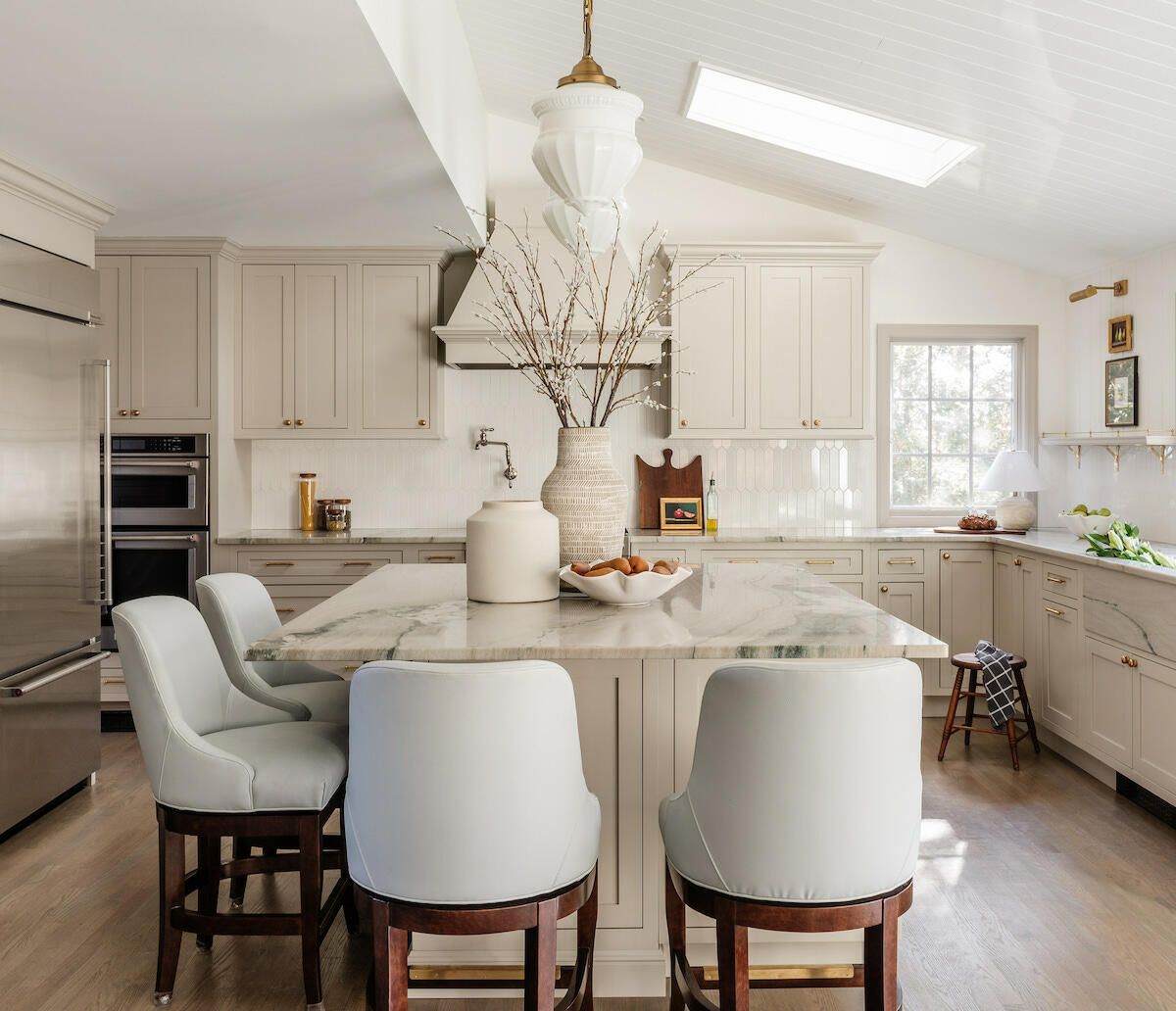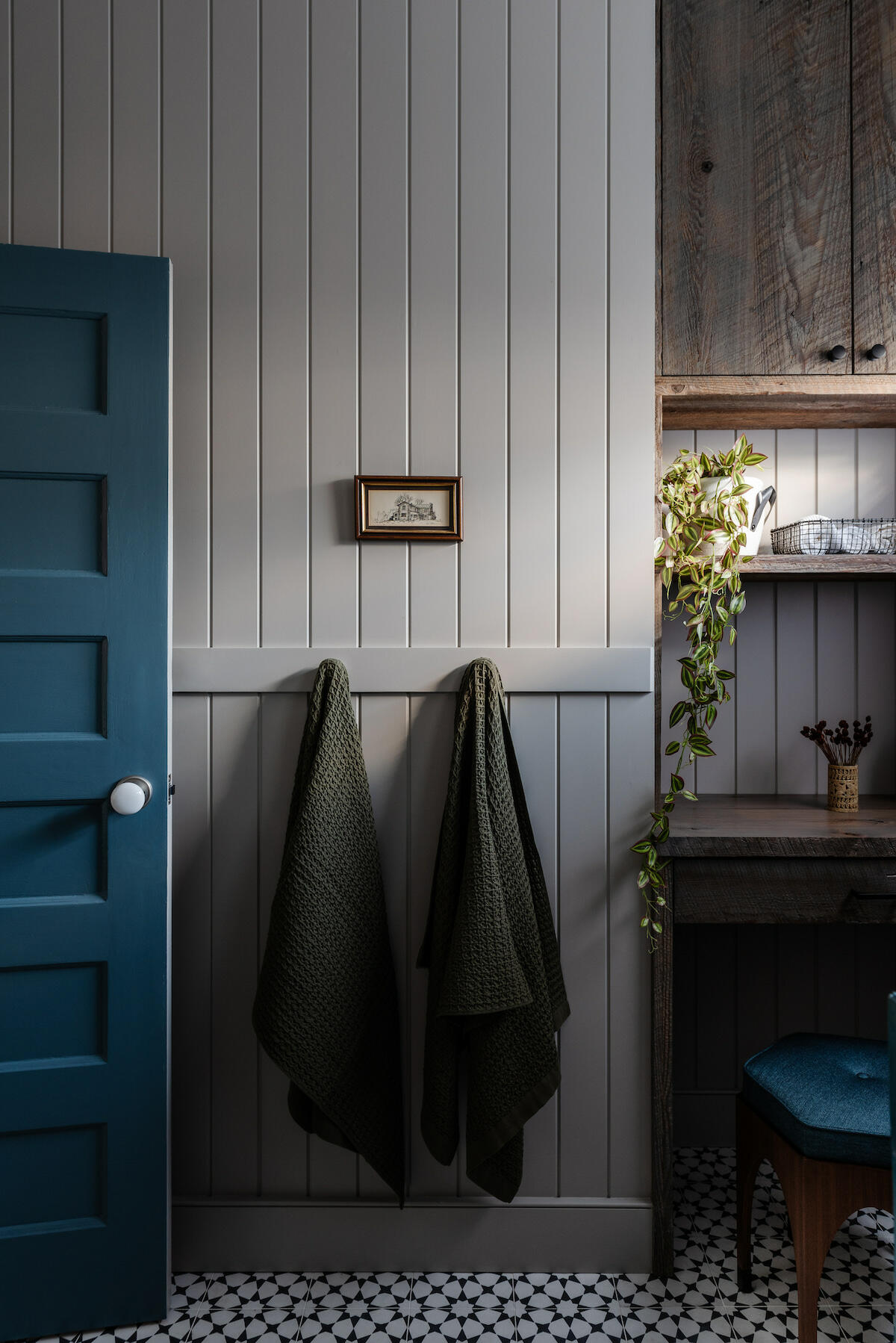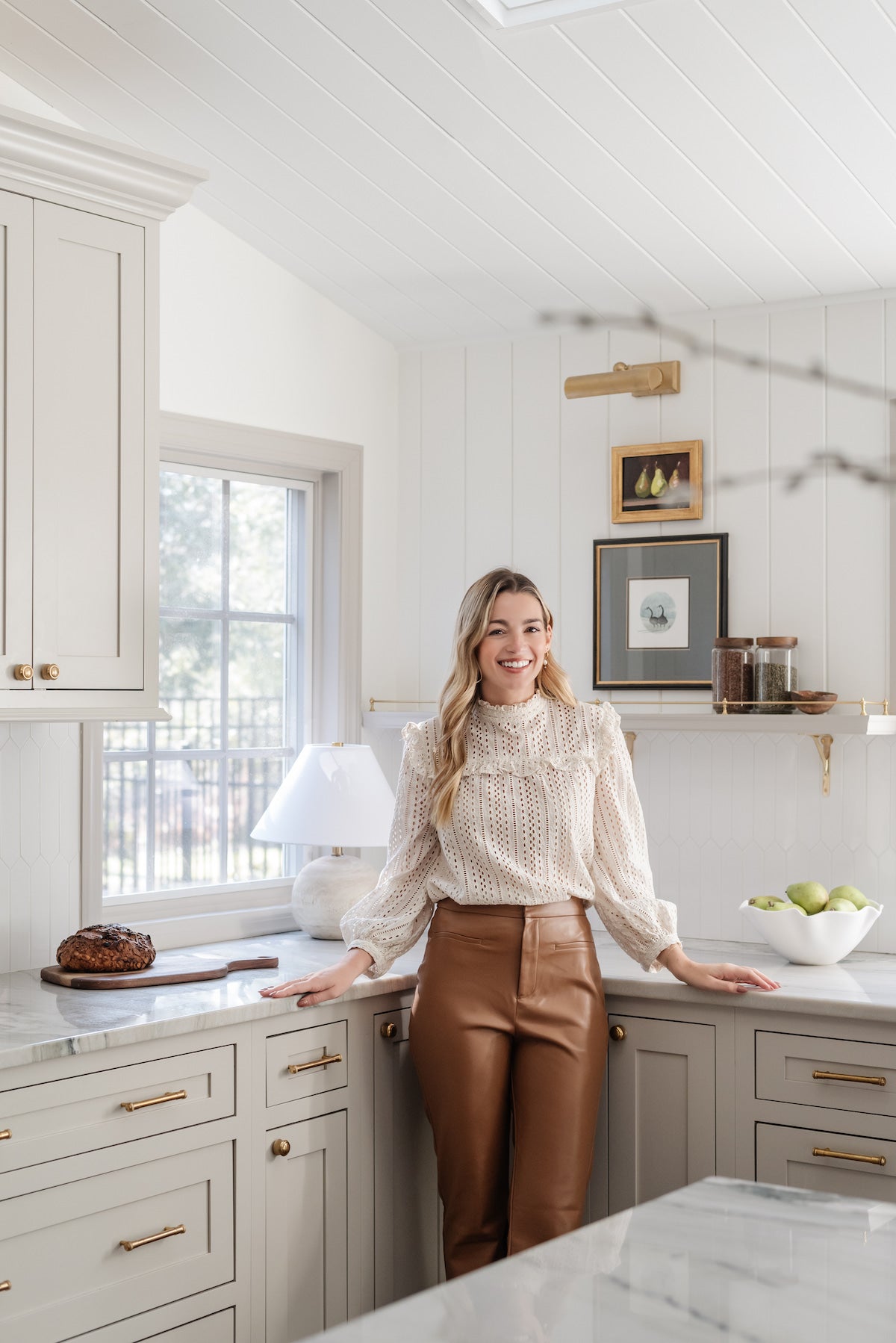In Ask an Influencer, Business of Home explores the creator economy. This week, we spoke with interior designer Corinne Back.
In retrospect, Corinne Back lost her job at the perfect time. After studying interior design at Virginia Tech, she’d graduated with a job in commercial interiors, which saw her designing office spaces, restaurants and bars for a co-working company in New York. But commercial work wasn’t her dream—she was just waiting for the right moment to break into the residential space. When the pandemic hit in March, she was furloughed, likely until the fall.
“I thought, ‘What am I going to do for the next six months?’” says Back. “That’s when I started this business.”
Back decided to take a chance on social media, launching a website, Instagram and TikTok in one fell swoop. Her content quickly evolved from inspiration images to content that reflected her personal perspective on design trends, sourcing tips and project implementation. Today, social media is still her number one lead generation tool, with an audience of 71,000 followers on TikTok.
Ahead, she shares how she uses her content to educate would-be design clients, the best way to find your ideal audience and the app she uses to give her Instagram grid a cohesive look.

Not just a pretty picture
Back’s first few posts were typical social media design fare: beautiful spaces from her portfolio, or favorite designs that inspired her. When it came to engagement, she got crickets—until she decided to switch things up. “I really started to see a lot more followers and engagement on my accounts when I started offering education and transparency instead of just pretty pictures all the time,” says Back.
To that end, Back decided on a dual approach, focusing on authenticity and service. She would show viewers the reality of what a luxury designer provides clients: diving into topics like the cost of design, the difference between a designer and a decorator, and why high-end and trade brands are worth buying instead of pieces sourced from big-box stores.
“Educating people outside of the design industry is tough, but this is a great platform to do it,” says Back. “Most people are just watching HGTV, which is pretty unrealistic, or they’re looking at beautiful design magazines and not realizing the process and hard work and costs that go into some of those rooms.”
Naturally, the strategy sparked pushback from followers who still couldn’t understand the rationale behind the costs of Back’s services. But it also cleared the way for potential clients to grasp the true investment and benefits of hiring a designer, or to realize that such a service was within their budget. “It really narrowed down the type of people that were engaging with my account, and they would inquire about actual design projects,” she says.
For the second part of Back’s educational approach, she cut straight to the source by offering design advice viewers could take and apply to their own DIY project, from tips on working with contractors to the best way to lay tile. She found that giving away a few of her secrets ultimately resulted in either a growing follower count, or a conversion from DIY-er to design client.
“If I can offer two or three things that make their renovation process easier, they’re more likely to gain trust in my opinions and see me as a professional who knows what I’m talking about—and I’m happy if they save the videos to refer to later,” Back says. “But a lot of times, they use [my tips] for their project, and realize, ‘Wow, that was really tough renovation; maybe we should consider a designer next time,’ [or] the next time they refer to my videos, I’m top of mind—and hopefully they reach out.”

Know your ideal audience
When it comes to clients, Back has long zeroed in on her ideal demographic: young families that live in old homes. More often than not, their age means that working with her will likely be their first professional design experience—which makes social media an even more useful tool for exposing them to the benefits of hiring a pro. The primary challenge: She has to make sure her content is landing on their For You page, which means navigating Instagram’s ever-changing algorithm). “It’s very easy to get off track and just want to post anything and everything, but I have to remind myself who I’m trying to attract and cater to,” says Back.
She has found that the key is to post content that relates to the challenges her ideal clients may face on a personal level. “In that young family, usually the parents tend to be busy professionals who don't have enough time on their hands to manage the project on their own, and they want to keep the character of that old home but transform it to show off their personality and make it function for their modern lifestyle,” she says. “I’m constantly talking about those sorts of things on social media, [including] how I [provide those services] for families.”
Pay attention to the platform
For Back, building an audience on both Instagram and TikTok does not mean reposting the same photos and videos across both platforms and calling it a day. The difference boils down to how potential clients interact with designers on each app. On Instagram, for example, Back finds that would-be clients are typically looking for a portfolio, so she makes sure her profile demonstrates a certain level of polish and professionalism.
“I love when a feed is aesthetically pleasing—when all of the images speak to each other, and you have this unique feeling through the colors or the style or the types of posts,” says Back. To obtain that effect, Back uses an app called Unfold, which allows users to map out what their social media feed will look like before they hit publish on a new post. “It’s like designing a website, but I’m designing the way my page feels on Instagram before I post,” she says.
On TikTok, she takes almost the opposite approach: speaking directly to the camera and giving viewers a sense of what it would be like to work with her. “In the beginning, I had such a hard time letting go on TikTok. I wanted it to be as aesthetically pleasing as my Instagram, to look perfect and only show off the best of the best,” she says “TikTok helped me be more lenient about that, because I realized people were attracted to the behind-the-scenes videos that weren’t so perfect.”





























